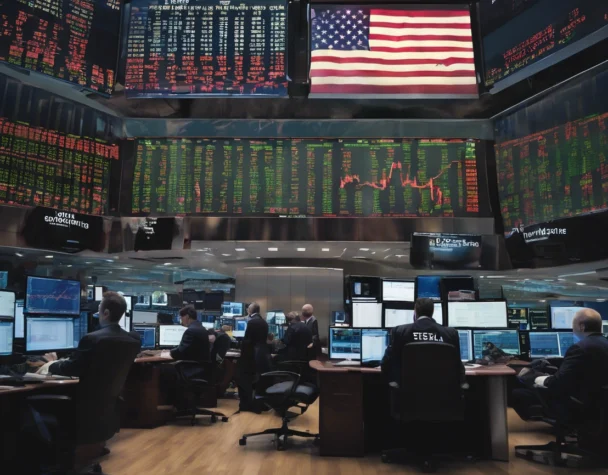
S&P 500 Closes Lower Amid Market Uncertainty
Wed, March 19, 2025Latest S&P 500 Figures and Market Drivers
On Tuesday, March 18, 2025, the S&P 500 closed at 5,614.66, marking a decline of 1.1% from its previous session. This drop reflects the increasing market pressure driven by significant losses in major technology stocks. Notably, shares of companies such as Tesla and Alphabet saw pronounced declines. Tesla’s stock fell by 5.3% amid investor concerns over leadership and mounting competition from emerging players like China’s BYD, while Alphabet’s shares dipped by 2.2% following news of its proposed acquisition of cybersecurity firm Wiz for $32 billion. These figures, reported by reputable sources such as AP News, underscore the mixed sentiments in the market.
In addition to the tech sector’s performance, the broader market sentiment was influenced by pending economic events. Investors are keenly awaiting the Federal Reserve’s next monetary policy decision. Market participants largely expect the Fed to keep interest rates unchanged, but the updated summary of economic projections will be closely scrutinized to gauge future policy directions. According to insights shared by Reuters, this meeting is poised to provide further clarity on economic conditions, which in turn could affect market trajectories.
External factors are also adding to the cautious tone. Ongoing debates around President Donald Trump’s tariff policies have introduced additional layers of uncertainty. The possibility of new tariffs on imports such as automotive products, pharmaceuticals, and semiconductors raises concerns about consumer prices and inflation. Such measures could have significant implications not only for domestic markets but also for global trade, thereby amplifying the overall market volatility.
Outlook for the Next Trading Session
Looking ahead to the next trading session, market observers expect the volatility seen on Tuesday to persist. With the Federal Reserve’s meeting on the horizon, investors are bracing for any announcements that could reshape market sentiment. The careful monitoring of economic indicators remains paramount, as even slight adjustments in policy expectations can trigger rapid market movements.
Analysts suggest that investors should adopt a cautious approach in the near term. The combination of falling tech stocks, potential tariff adjustments, and the uncertainty surrounding the Fed’s economic projections suggests that the market could experience intermittent bouts of trading turbulence. Market strategists recommend that both institutional and retail investors pay close attention to intraday developments, especially given the sensitive nature of today’s economic landscape.
Despite the uncertainty, there is also opportunity for traders who can navigate the volatile conditions. Short-term strategies may be beneficial as traders look to capitalize on rapid price swings, while long-term investors are advised to keep a diversified portfolio to mitigate risks associated with sudden market shifts. In summary, while the S&P 500’s recent decline underscores market vulnerabilities, the upcoming policy announcements and ongoing geopolitical factors will be key determinants of future market performance.
Investors are encouraged to stay updated with trusted financial news sources and maintain a flexible investment strategy during these unpredictable times. As the market continues to react to evolving economic indicators, keeping an eye on both domestic policy changes and global trade dynamics will be crucial for making informed trading decisions.

